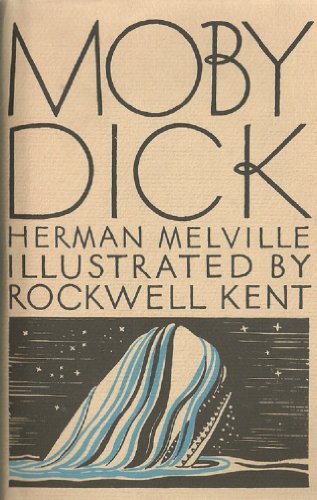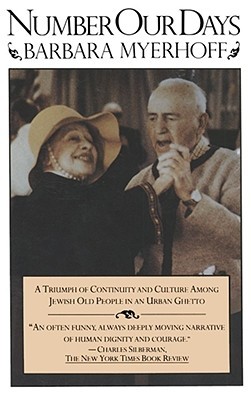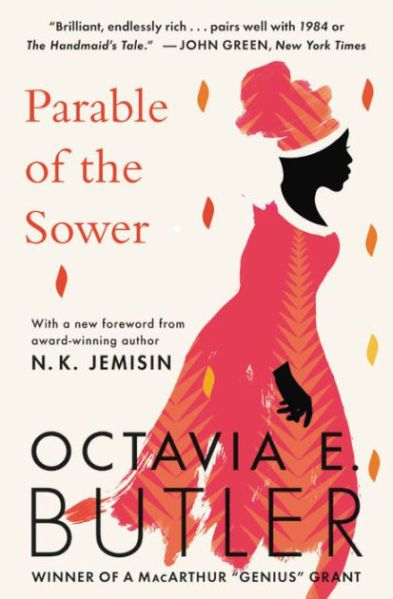One of my favorite things in life is an accidentally curated small shelf of books in a place like a hotel or a break room. When I was thirteen, my family and I lived in Rome for a year and wound up in an apartment with just such a collection. It had perhaps three smallish shelves that included children’s books. I read every single one over the course of a year—many of them more than once. There were books from two British schoolgirl series by Enid Blighton, whose descriptions of midnight feasts and classroom pranks made me want to board the next plane to England. The “Teach Yourself Hebrew” Berlitz book helped me to figure out that I could write backwards just as easily as I could forwards—something I still do as a party trick on occasion. Three books in particular imprinted themselves on me that year. These were The Water is Wide by Pat Conroy, Farewell to Manzanar by Jeanne Wakatsuki Houston, and Night by Elie Wiesel. These books gave me turns of phrase and images, like scenes from a film, as well as a broader understanding of violence and oppression. They made me question the concept of evil, whether it existed, how it was personified. A combination of relativism and interest in subjective experience had begun to inform my worldview.
As an adult and now an academic, I remain a voracious reader of fiction. A good detective novel (or preferably a series of novels) gives me more pleasure than most things in life. But certain books, as in the list above, have impacted me more profoundly. To be considered part of my personal canon, I considered that a book needed to be absorbed into my sense of personhood and into my scholarship. The five books below do that. My top five are all ethnographic masterpieces, while only one of them is, strictly speaking, an ethnography. They make worlds come alive; they help the reader to understand people as individuals and in their social context. They all deal in image making, even though only one of them includes illustrations. All offer what Clifford Geertz called “thick description,” a richness of detail, deep feeling, profound awareness. I return to these books periodically. They are always with me even if I haven’t picked them up in a decade or more. I think of them as part of my own curated bookshelf, now a more mental than physical place. My own canon—and I think everybody’s really—has an element of the unplanned. These lists give shape to the accidental, describe how ideas have fused in the mind of a person. The list below explains my bookshelf, and part of the way my writing works.
Harper Lee, To Kill a Mockingbird (1960)

To Kill A Mockingbird has been an important lifelong book for me, primarily for two reasons. It was the first book in which I understood that there was meaning underneath a story. My seventh-grade teacher Mrs. Wallace pushed me to move beyond descriptions of plot and characters. I was particularly charmed with Scout, tomboy that I was. But Mrs. Wallace pressed me to tell her what the book was really about. I paused after she asked me this, and I swear she could see the gears turning and a faulty lightbulb beginning to flicker in my head. I answered “racism.” At age twelve, my broader understanding of how to analyze literary texts and the racist history of the United States were bound up together in a neat bundle. Years later, as I was working on my first book, I began to read To Kill A Mockingbird almost continually, like a bible, just a few pages at a time. I had heard somewhere that reading good books makes you a good writer. During that period, I read more to absorb Harper Lee’s prose, but also for what it meant to interweave a story with greater truths—something I still strive for in my own writing.
Herman Melville, Moby Dick (1930)

My investment in this one is more specific than the rest because it has to do with a particular edition of the book. My husband’s grandmother gave me her copy of the 1930 edition of Moby Dick, illustrated with ink drawings by Rockwell Kent. We inherited this volume with several others in her collection. Before that edition, I had been uninterested in the book. I was asked to read it in high school but never actually did. Despite loving to read, I seldom read assigned books in high school. Well into grad school, this particular edition, though, led me to something that would become foundational. Both author (Melville) and artist (Kent)—men from two different time periods—came together to create a book in which the visual and the literary are beautifully conjoined and wholly ethnographic. The broader arc of Melville’s story is one thing, but the magic is in the details of description: the scarred body of the white whale, accidental joy in shipmates squeezing each other’s hands in spermaceti, the malodorous insides of the oily beast, the way Ishmael tattoos the dimensions of whale bones on his body so that he won’t lose them. Kent’s illustrations in Moby Dick are considered some of his finest work. He toggles between didactic images and ones that create fused context and beauty more abstractly. Both Kent and Melville were ethnographers in this sense—and both had been immersed in maritime cultures. I knew something of the maritime world due to the three summers in college I spent commercial fishing in Alaska. At my uncle’s fish site was another small bookshelf, mostly full of James Michener and Ernest Hemingway, and I have vivid memories of using the pages of an ancient copy of Michener’s Hawaii to kindle the flames of my wood-burning cabin stove. My experience in a fishing community had primed me for understanding Moby Dick as a text. The book also played into my graduate school education more directly. My advisor Tim Earle loved the Rockwell Kent edition of the book, and we sometimes discussed it. He once told me that my writing about gang graffiti was like a “flayed fish.” He said that, in analyzing gang expression, I had managed to kill the thing entirely. He asked me to think instead about how to communicate the sensibility of the thing. My pathway for how to get there came partly from Moby Dick: the balance of image with text, of story with ethnography. Moby Dick allowed me to understand what it meant to write visually. The structure of my first book includes sections on “Etymology” and “Extracts,” as does Melville’s work—a small gesture toward a transformational text.
Henri Alleg, The Question (1958)

I often find short books to be powerful. Roland Barthes’ Camera Lucida is like that for me, as are Paul Rabinow’s Reflections on Fieldwork in Morocco, Angela Davis’ Abolition Democracy, and Hannah Arendt’s Eichmann in Jerusalem. I could have chosen any of these for this list, but The Question rises to the top because of the particular style of reflection it provides. The book involves the question of torture. Alleg was a journalist in Algeria in the 1950s when his detention led to his becoming the victim of the torture he describes. The book demonstrates his ability to be both lost in the experience and to describe it in vivid detail. The real feat is that he teaches the readers what he clearly learned himself: about the subjective experience of the torturer. He describes the work of torture—meaning that he interprets torturing to be a form of labor. In this the reader begins to understand the complexity of the act— the way in which the roles of victim and victimized are shoved together in this strange project. The book created social change and outrage as people had to deal with it as an object and as a narrative in the world. The book’s publication represented a time when citizens of a Western, democratic country—in this case France—had to come to terms with themselves as torturers. They had to come to terms with themselves and to admit that they, a former colonial power, were now the savages.
Barbara Myerhoff, Number Our Days (1978)

This book’s power is its foundation in connection and empathy. The relationship of the author to her research subjects—elderly Jews in 1980’s Venice, California—facilitates her ability to understand people, to embed them in their daily lives, to see the pain of their pasts, and to show how these things are interrelated. Myerhoff sees herself in her respondents. She knows that she will someday be an elderly Jewish woman. She wants to know what it’s like not to be a spry young person, but instead to struggle with movement or vision: the multiple challenges of an aging body. She dons dark sunglasses and oven mitts that dampen her senses and slow her reactions. But mostly, she immerses herself in stories and relationships, forming intimate connections as a result. Myerhoff’s own early death from cancer unintentionally becomes the “invisible protagonist” that haunts the narratives of her research participants, just as she argues that death is the invisible protagonist that haunts her research participants. The layering of death’s shadow in this text—the early violence her respondents describe in shtetls or in the Holocaust is qualitatively different than death’s omnipresence in the contemporary lives of her participants. When Myerhoff was writing the book, she didn’t know about the cancer, but her early demise is the inevitable lens through which later readers approach this text. I continue to think in terms of her concept of the invisible protagonist in order to name hidden forces that are acting upon people and things. I carry that phrase with me as a stand-in for her larger intervention, and as way of perceiving patterns at play in people’s lives, to see what people are carrying with them that may not be evident to the casual viewer.
Octavia Butler, Parable of the Sower (1993)

In this future, not-quite-science fiction book, Butler tells the story of race, the city, and conceptions of the future through the experiences of a young, black, female protagonist. Like the others on this list, this book has etched a series of images into my mind. It’s a profoundly visual text through which Butler conjures up a new idea of Los Angeles and the world as a whole. Butler paints scenarios of future L.A. by pulling at the threads of today: with gated communities, rampant gang-like violence, people walking on freeways, and children learning to make acorn bread in order to utilize the resources that remain: resourcefulness, resilience, but also pain and fear. This post-apocalyptic tale of Los Angeles has now become legend just as Butler has become a legendary author. Many things are fused together in this text for me: my relationship to my mother—a deeply empathetic person who also loved the book and Butler’s work as a whole; my relationship to my city—I’ve “sited” this book without meaning to by populating it with places I know; and my brief encounter with Butler herself, who said she recognized something “true” in my depiction of the gang life in Los Angeles. Truth radiates from her depiction, far more profound than most other depictions of Los Angeles or anywhere. Octavia Butler has given a gift in her vision of the world. The fact that it comes through my city and never lets go of empathy and its dangers has impacted me deeply.
Susan A. Phillips is professor of environmental analysis and urban studies at Pitzer College. She is the author of several books including The City Beneath: A Century of Los Angeles Graffiti.

Bibliography
Alleg, Henri. The Question. London, England: Calder. 1958
Butler, Octavia. Parable of the Sower. New York: Grand Central Publishing. 2019. ©1993.
Lee, Harper. To Kill a Mockingbird. Philadelphia & New York: J.B. Lippincott Company, 1960.
Melville, Herman; Illustrated by Rockwell Kent. Moby-Dick: Or, the Whale. New York: Random House. 1930.
Myerhoff, Barbara. Number Our Days. New York, : Simon and Schuster. 1980. ©1978.


 Deobandism, Islam and the Religious Narratives of the Taliban
Deobandism, Islam and the Religious Narratives of the Taliban